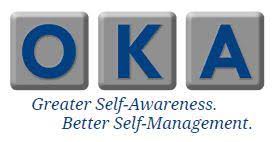by Harris Fanaroff, Director of Client Relationships
We at OKA recently gathered twelve Organization & Leadership Development practitioners to address an urgent topic: “How are we helping people through the new reality of the world as we get into the Fall and start of school, and what are our organizations doing to help people deal with this new world?” The goal of the conversation was helping employees and both creating and tapping the wisdom of a community and learning from each other about innovative ideas that organizations were implementing to serve their people in our current, challenging time.
We were fortunate to have a friend of OKA, Hermeka Ray, help lead our discussion and generously share a number of things they are doing at her organization, Freddie Mac. Hermeka and others in the group shared many great and innovative ideas, but for brevity’s sake, I wanted to shorten the list to five ideas/themes that emerged.
1. Begin meetings with gratitude
 We intentionally started our conversation with everyone going around the Zoom, and sharing something they were grateful for. While this isn’t a ground breaking exercise, the nuanced part was the specificity required in your gratitude sentence. Just saying, “I’m grateful for my job” doesn’t do the same for you as saying, “I’m grateful that I get excited to come to work today because X colleague genuinely brightens my day when he answers the phone.” Helping employees to find and express the things for which they are grateful contributes to a safer, more connected and more optimistic work environment.
We intentionally started our conversation with everyone going around the Zoom, and sharing something they were grateful for. While this isn’t a ground breaking exercise, the nuanced part was the specificity required in your gratitude sentence. Just saying, “I’m grateful for my job” doesn’t do the same for you as saying, “I’m grateful that I get excited to come to work today because X colleague genuinely brightens my day when he answers the phone.” Helping employees to find and express the things for which they are grateful contributes to a safer, more connected and more optimistic work environment.
Bottom Line – The more specific you are with your gratitude—people, places, times, events—the more you’ll get the benefits of this practice.
 2. Provide your people with a flexible work schedule
2. Provide your people with a flexible work schedule
Schools are struggling to re-open, and the reality for many people in this country is that they now have to work and help their children get through virtual school at the same time. This is difficult, and an employer best-practice is to allow this kind of flexibility for employees. We can no longer expect that each employee is available from 9 to 5 because some employees’ will get their best work done from 7 to 10 PM—once they have put their kids to sleep.
Bottom Line – The more we can provide flexibility around the workday for our people, the more productive they will be.
3. Helping employees be aware of burnout
 The need for flexible schedules speaks directly to what we are hearing from a ton of people right now, burnout. Now that we are no longer commuting to an office and our “offices” are in our homes, people are working more hours and feeling burned out as a result. It’s easy to hop on your computer to do work at night and on weekends, and because of this, people don’t feel they can get away. The best organizations are helping employees by addressing this burnout through workshops and training opportunities as well as highly recommending vacations during this time.
The need for flexible schedules speaks directly to what we are hearing from a ton of people right now, burnout. Now that we are no longer commuting to an office and our “offices” are in our homes, people are working more hours and feeling burned out as a result. It’s easy to hop on your computer to do work at night and on weekends, and because of this, people don’t feel they can get away. The best organizations are helping employees by addressing this burnout through workshops and training opportunities as well as highly recommending vacations during this time.
Bottom Line – Identify the early warning signs of burnout in your organization, and train your managers to be aware of it when they see it.
4. Allow the space for conversation
Organizations are struggling right now; there is no doubt about that. The stress of these pressures can lead many to care more for the bottom-line than the people with whom we work. The irony is that if we take care of our people, the bottom line will much more likely be taken care of. The best organizations are providing opportunities for their people to share what they are feeling right now. They are continuing to have trainings to provide open spaces for genuine check-in moments like, “how are you all feeling with everything going on?”
Bottom Line – Genuinely check-in with your people, and provide the space for them to share how they are feeling. Ask, “How are you doing?” And genuinely listen to the answer before moving on to your work conversation.
5. Helping employees to emphasize connections
Creating connections in the virtual world can be difficult, but they are necessary. We need our family, friends, and colleagues now more than ever as we deal with the stressful reality of not being able to see each other in person. Many successful organizations are providing virtual cooking classes, virtual coffee chats, virtual workouts, and virtual walking meetings to help increase connections inside their organization. We need to find a way to make up for the previous random conversations at the water cooler where genuine connections are and were built, and some organizations are being intentional about doing this in the virtual space.
Bottom Line – Put time on your calendar to connect with people inside your organization. Move your weekly check-in to be 1 hour instead of 30 minutes, and make it a walking conversation so that you can connect on topics outside of work.


This is terrific guidance! Simple enough but that doesn’t mean we do these things without being reminded. Love the point “genuinely listen to the answer” since the other person always knows when we aren’t. I’ve been thoroughly enjoying walking meetings and plan to build more of these into my September calendar. Thanks, Harris and OKA, for continuing to put important thinking into the universe at this critical time!